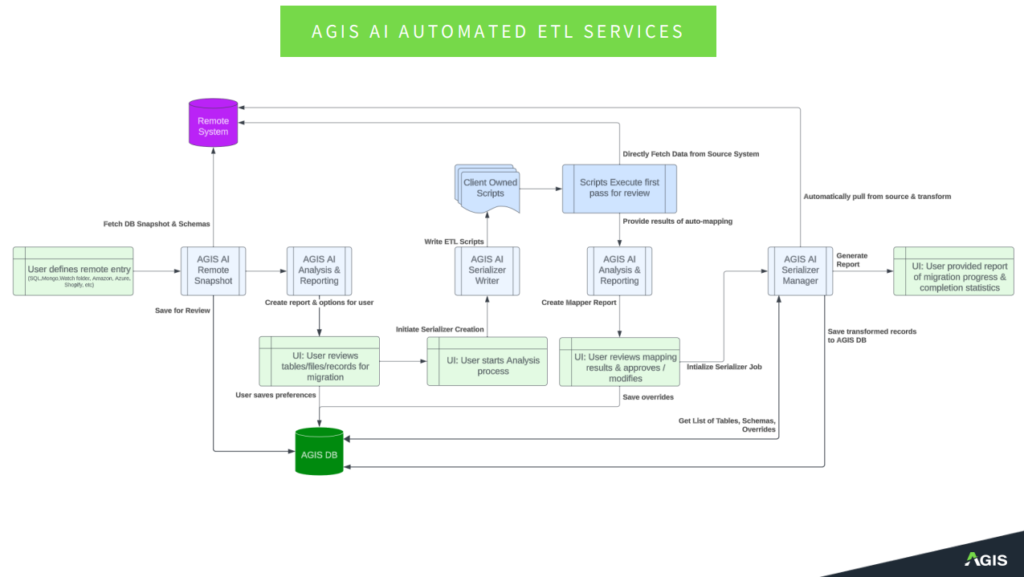ETL stands for Extract, Transform, Load and it is a process used in data warehousing to extract data from various sources, transform it into a format suitable for loading into a data warehouse, and then load it into the warehouse. The process of ETL can be broken down into the following three stages:
- Extract: The first stage in the ETL process is to extract data from various sources such as transactional systems, spreadsheets, and flat files. This step involves reading data from the source systems and storing it in a staging area.
- Transform: In this stage, the extracted data is transformed into a format that is suitable for loading into the data warehouse. This may involve cleaning and validating the data, converting data types, combining data from multiple sources, and creating new data fields.
- Load: After the data is transformed, it is loaded into the data warehouse. This step involves creating the physical data structures and loading the data into the warehouse.

The ETL process is an iterative process that is repeated as new data is added to the warehouse. The process is important because it ensures that the data in the data warehouse is accurate, complete, and up-to-date. It also helps to ensure that the data is in the format required for data mining and reporting.
Additionally, there are many different ETL tools and technologies available, such as Informatica, Talend, DataStage, and others, that can automate and simplify the ETL process.
ETL is a process in Data Warehousing and it stands for Extract, Transform and Load. It is a process in which an ETL tool extracts the data from various data source systems, transforms it in the staging area, and then finally, loads it into the Data Warehouse system. (See https://www.geeksforgeeks.org/etl-process-in-data-warehouse/) for more detail on why ETL is needed.
AGIS takes a unique approach, leveraging our next-get automation and AI enhanced approach. As a high level view, let’s look at how our system utilizes these tools to Extract, Transform, and Load your data (structured or unstructured)